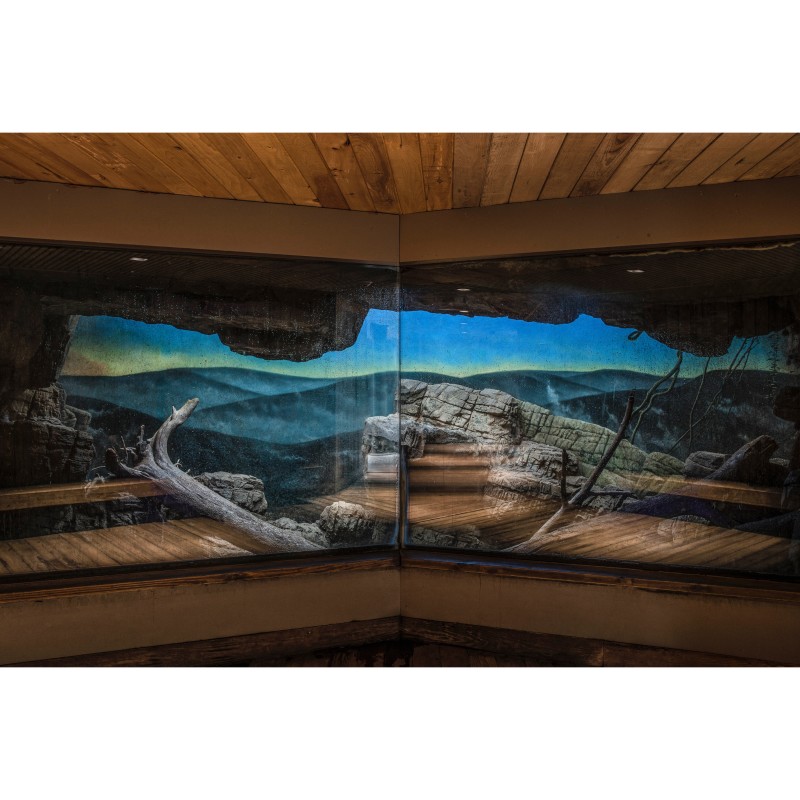Preface
Text/Xiao Ruiyun
Unlike fleeting moments captured with a camera, Zhong Yuzhe's works reveal the mark of time. Time does not disappear completely but is integrated within the space of his images.
The Zoo series captures the zoos in Shanghai and New York. The animals, however, are nowhere to be found in the photographs. As the camera shutter remains open, Zhong helps the animals to complete their 'escape plan', leaving behind an empty landscape of their existence. The visual representation of the "ghostly" state of the animals and their absence allow the audience to focus on the environment in which they live, especially those scenes where human beings have forced their way in. Zhong's works present the human imagination of animals and address various ethical issues and conflicts between humans and animals.
This series reproduces the space of the landscape in large scale images, an almost panoramic view that confirms the social power dynamics discussed in Foucault's Discipline and Punish.1 The corresponding series, Human Zoo consists of a large-scale image and a group of sculptures. The visual works refer to the perspective of humans looking at animals, reflecting on humans themselves in a mirroring way of thinking. The distorted forms of the sculptures further highlight the alienation of humanity itself in an involuted society.
In the work Alienation and Acquaintance, Zhong treated 16 urban landscapes of Shanghai with multiple exposures. His work blurs the attributes of time to reveal a space that is purely historical and modern; A Commemoration for the Empty City transforms the every day crowded city streets of Shanghai into empty scenes through long exposures, and incorporates sound, extending the temporal and spatial context of the photographs.
Zhong is fascinated by the continuous stretch of time. In Ambivalent Distance, he turns his attention to small and intimate personal landscapes - objects from his childhood - and layers them on top of each other, like the accumulated dust of time. Part of the work is taken from familiar family photographs, which are our initial memories of family life. The blurred portraits acquire a certain degree of emotional empathy. The other layer of time reminiscence is taken from letters, toys, cameras, and other objects from his formative years, which are presented in a visual form similar to topography, prolonging the depth of time.
Zhong employs a camera different from the naked eye to view the landscape around him and manipulate the process of time, making it perceptible in a different way. At the same time, he constantly reflects on the boundaries among man, and nature, society, and the relationship between domination and alienation. The space of the landscape is transformed into a vessel of time where ongoing conversations travel through the space and time of his work.
Note: Discipline and Punish (1975), the work of the French philosopher Michel Foucault who talks about the panoptic surveillance in prisons with the Panopticon model and the power dynamics between viewing and place.
